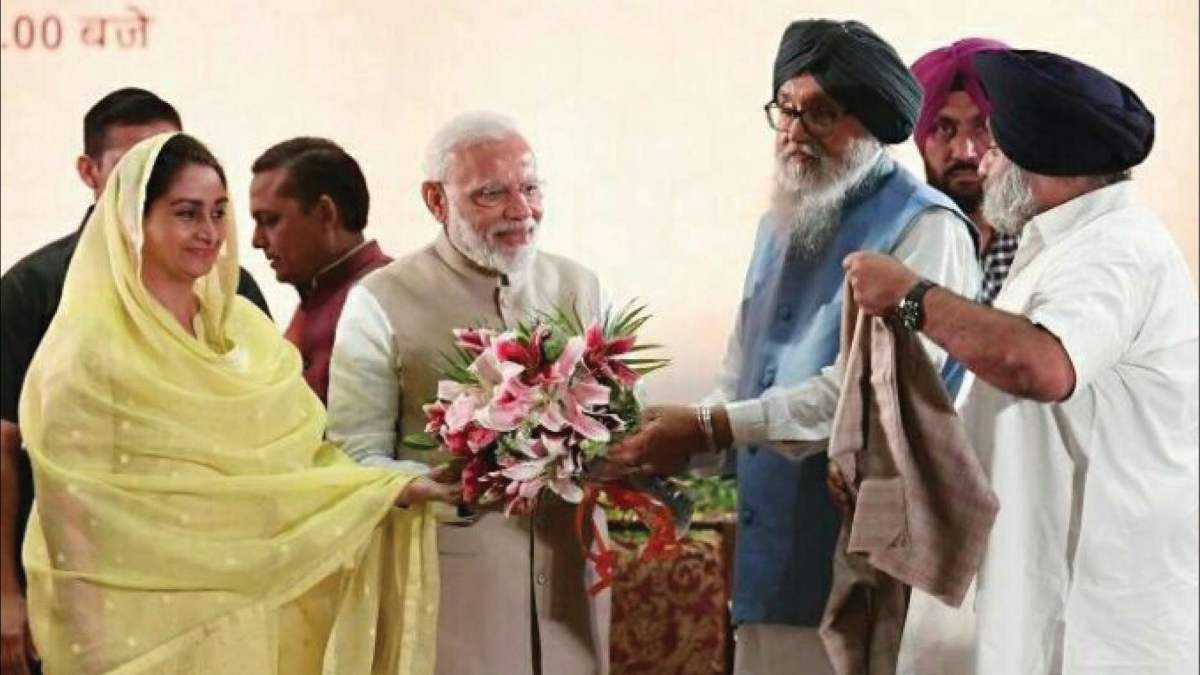


The Modi government’s second stint in power has seen an interesting change in its equation with its allies. During both the stints, the Prime Minister and his team managed a simple majority ruling, comfortably crossing the 272 mark, thereby ruling out the need for allies. Yet the party reached out to its allies both in 2014 and 2019, accommodating them in government formation, albeit with ministries of lesser heft than what it kept for itself. But no ally could throw a tantrum; and everyone took what was meted out, or not (as in the case of the JD-U). Yet, there is a perceptible difference in the head-count of allies during the Modi government’s second stint in power.
First, it was the Shiv Sena that walked out after the Maharashtra polls a few months after the 2019 general elections and tied up with the Congress and the NCP. And recently we saw another ally, the Shiromani Akali Dal, break ties with the BJP over the farmers’ bills. Both the Shiv Sena and the Akali Dal are the BJP’s legacy allies going back to the AtalAdvani days. The fact that they have walked away is itself a testimony to how much the current BJP has drifted away from its older avatar. Of course, in recent times it has added new allies to its kitty, especially in the Northeast, and the onagain, off-again JD(U).
This brings us to the curious balancing act of the allies in the Bihar elections. The BJP has decided to stick with the JD(U) and Nitish Kumar. But it has also entered into a not-sosecret pact with Ram Vilas Paswan’s LJP. The LJP has walked out of the BJP, LJP and JD(U) alliance citing differences with Nitish Kumar, and announced that it would not be fielding any allies in the seats that are being contested by the BJP. He even has a slogan in place: Modi Tujhse Bair Nahin, Nitish Teri Khair Nahin (Have nothing against Modi, my fight is with Nitish). In fact, a chunk of LJP candidates are also those who have been rejected tickets from the BJP camp. Officially the BJP has disowned its rebels but this is an age-old method of strategically placating disgruntled candidates who may be of use later. Ashok Gehlot did the same in Rajasthan when he ‘fielded’ many of his candidates denied tickets by the then PCC chief Sachin Pilot as ‘independents’ against the official Congress candidates. When it came to the crunch, these independents helped shore his case for the chief ministership.
Moreover, at the Centre the LJP continues to be part of the NDA with the late Ram Vilas Paswan holding a cabinet berth. Again, one can compare this to the JD(U) which is the official partner at the state level but doesn’t hold a cabinet post at the Centre as Nitish Kumar wasn’t happy with what was being offered to him. Chirag’s breaking away from the NDA at the state level also had his father’s blessings for Ram Vilas Paswan had tweeted a few days before his demise: “I stand firmly with every decision of his (Chirag).”
Hence the only winner in this bizarre calculation is the BJP, for once the results are in it has the pick of whichever ally brings in the better report card. Equally interesting is the JD(U) reaching out to Jitan Ram Manjhi to buffer its own numbers. In fact, even during the 2019 Jharkhand polls the JD(U) had preferred to fight it alone than go in for an alliance with the BJP. Already bitten by the Sena and unsure of the mercurial Nitish, it is clear that the BJP has worked out a Plan B. Both Amit Shah and the PM himself have been reaching out to young Chirag and working on his ambitions to come up with this strategic game plan. In fact, after the 2014 general elections, the PM had commented on Chirag’s campaign style and singled him for praise at a meeting of the allies. If the numbers stack up in favour of a BJP-LJP government then the BJP would keep the CM chair for itself and offer the deputy CM to young Paswan. With the JD(U) tie-up, Nitish will continue as CM. So, it’s not too difficult to see which combination the BJP would prefer.
Which brings us to the moot point of this essay. Unlike the BJP of the old where allies shared some ideological rapport with the saffron party, the tieups in the Modi-Shah era are more transactional in nature. Beginning with the PDP in the erstwhile state of J&K to the AGP in Assam. Both alliances have since outlived their utility and have been severed. When there is no ideological commonality or a legacy connect, then there is very little to keep the relationship going. The alliance is then based only on utility and that is a quality with a very limited shelf life. More so in the BJP of Modi-Shah where the only definition of utility is a prop that keeps the BJP in power. And not the other way round, as is what happened with the SAD in Punjab, the Sena in Maharashtra, or even the PDP in J&K. And if the chips fall as planned, it could well happen to the JD(U) in Bihar. The message is clear: Having conquered the Centre, the goal now is to ensure a BJP CM in every state and alliances will clearly be worked accordingly.